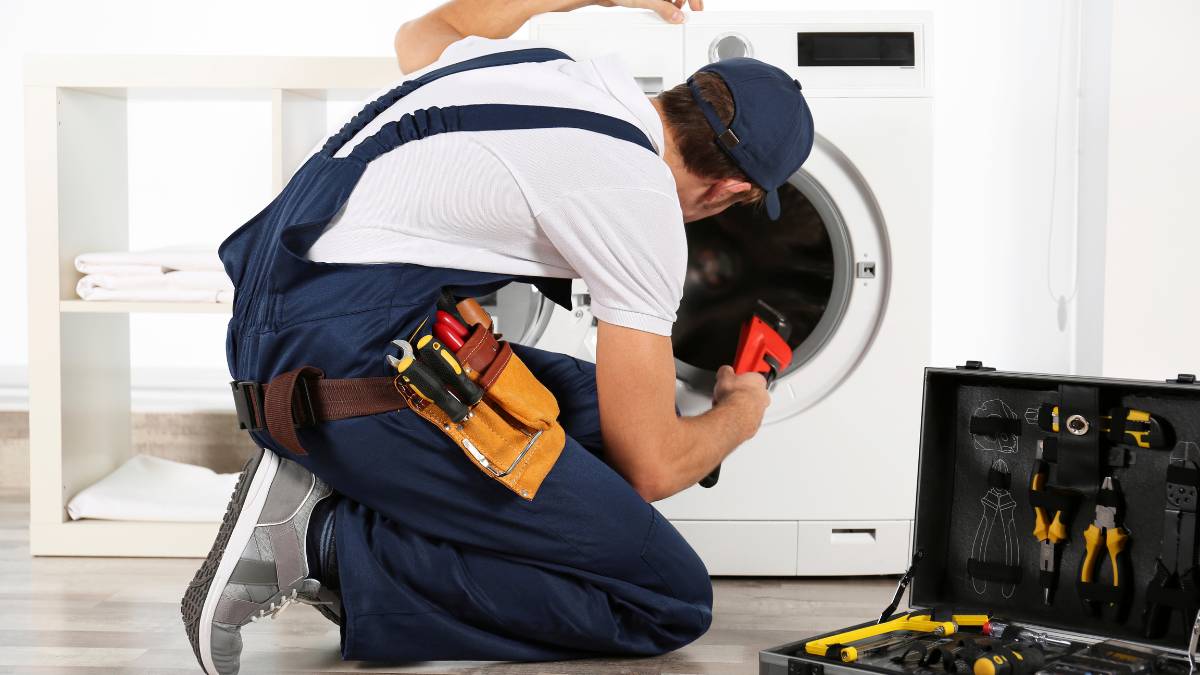Last Updated on February 9, 2024 by Kravelv Spiegel
The hum of a working washing machine is a familiar sound in households, but when unexpected noises disrupt the melody, it can raise concerns. This article aims to unravel the mystery behind everyday washing machine noises, to help homeowners understand the potential causes and to provide insights on how to resolve them.
Identifying Normal Sounds:
Before delving into troubleshooting, it is vital to familiarize yourself with the typical sounds a washing machine produces throughout its various cycles. Acquainting yourself with these normal operational sounds establishes a baseline for distinguishing irregular noises. This foundational knowledge is invaluable when seeking to identify and address potential issues. If abnormal sounds persist, consulting with a professional Appliance Repair Service ensures a comprehensive understanding of the problem and an effective resolution.
Common Washing Machine Noises and Causes:
Loud Banging or Clanking:
- Potential Cause: Loose items, such as coins or buttons, in the drum.
- Solution: Check and remove any foreign objects trapped in the drum or between the tubs.
High-Pitched Whining:
- Potential Cause: Worn-out or damaged belts.
- Solution: Inspect and replace any worn or damaged belts promptly.
Loud Thumping During Spin Cycle:
- Likely Cause: Uneven loads or an unbalanced machine.
- Solution: Rearrange the load to achieve better balance and ensure the machine is on a level surface.
Grinding Noise:
- Potential Cause: Worn-out or faulty bearings.
- Solution: Replace the bearings to eliminate the grinding noise.
Squealing or Squeaking:
- Likely Cause: Worn-out motor or belt.
- Solution: Lubricate or replace the affected components for smoother operation.
DIY Troubleshooting Steps:
Inspecting Drum and Agitator:
Check for loose items or foreign objects that might be causing unusual sounds.
Balancing the Load:
Ensure an even distribution of clothes inside the drum to prevent unbalanced spin cycles.
Checking Belts:
Examine belts for signs of wear, fraying, or damage and replace them if necessary.
Examining Bearings:
If grinding noises persist, inspect and replace worn-out or faulty bearings.
Lubricating Moving Parts:
Apply lubricant to moving parts like the motor or agitator to reduce friction-related noises.
When to Seek Professional Help:
While attempting DIY troubleshooting can address numerous washing machine noise issues, there are situations where professional intervention becomes imperative. If the noise persists despite your efforts or if you feel uneasy about performing specific repairs, it is recommended that you contact a reputable washing machine repair San Antonio service, especially for those in San Antonio. Professional technicians possess the expertise to diagnose and rectify complex issues, ensuring your washing machine’s longevity and optimal performance.
Conclusion:
Understanding the symphony of sounds emanating from your washing machine is crucial in identifying and addressing potential issues. By recognizing everyday noises, investigating their causes, and implementing simple DIY troubleshooting steps, homeowners can often restore their washing machines to harmonious operation. For complex issues or persistent noises, enlisting the expertise of a professional washing machine repair service ensures a thorough and accurate resolution, allowing you to enjoy the peace of laundry day once again.

